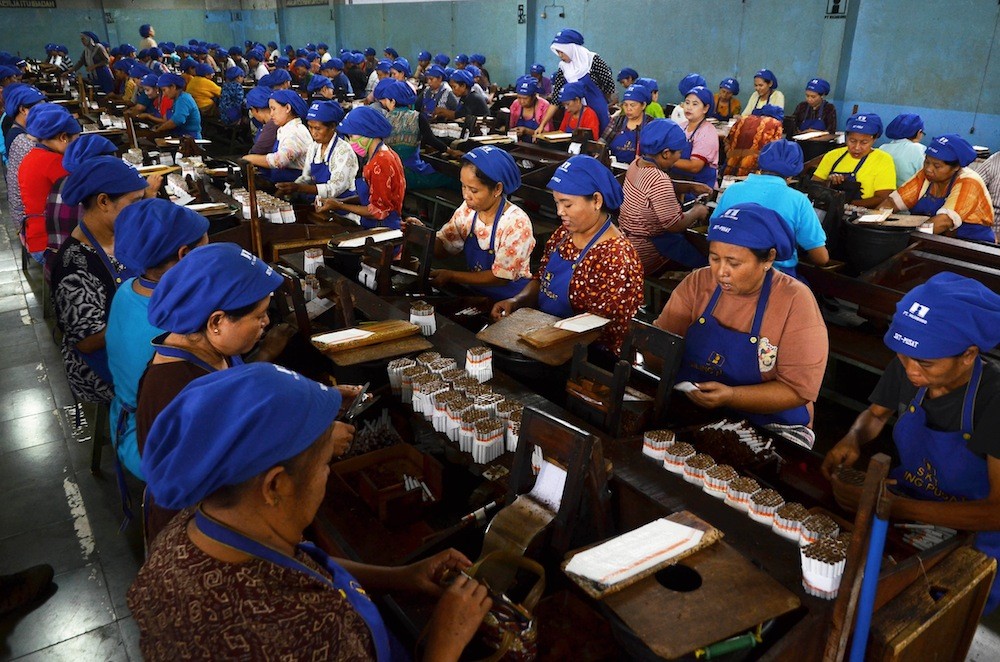Popular Reads
Top Results
Can't find what you're looking for?
View all search resultsPopular Reads
Top Results
Can't find what you're looking for?
View all search resultsRI demographic trends: Potential and risks
Change text size
Gift Premium Articles
to Anyone
T
he typical long-run demographic scenario for an emerging economy like Indonesia is an increase in the number of working-age people that leads to an increase in the labor force, thereby boosting economic growth.
This is apparent in the lowering of the dependency ratio, a measure that compares the size of the dependent population (citizens aged zero to 14 plus those aged 65 and older) to the size of the so-called working-age population (those aged 15 to 64).
The United Nations describes the declining profile of the dependency ratio as the “window of opportunity” when a “demographic dividend” may be reaped by a country. The potential opportunities within the demographic dividend can include an increase in labour supply, an increase in personal savings, higher levels of tax revenue, lower health and social costs as a result of less population dependence and higher domestic demand brought about by increasing gross domestic product (GDP) per capita. Conversely, a rising dependency ratio entails increasing risks for the economy, as more of the population becomes reliant on others, be it their family members or the government.
A falling dependency ratio is not a permanent situation. Indonesia is still in the declining period of the dependency ratio with its population projected to pass 300 million in the next 20 years. Despite the expectation of strong population growth into the near future, a lower projected fertility rate and a higher life expectancy will lead to citizens 65 years and older making up a larger share of the population.
Indeed, by 2040, it is projected that more than 30 million Indonesians will be aged 65 years and older, close to 10 percent of the population. This is a big increase as people aged 65 and older were only estimated to account for 5 percent of the population in 2014. Recognising that Indonesia’s demographics are moving toward an aging phase, there is a limited opportunity for Indonesia to capitalize on its demographic dividend window.
There are a number of substantial challenges associated with a rising share of the dependent population. These challenges include slowing economic development as there are potentially fewer labor force participants and potentially higher budget expenditure.
Using health policy as an example of budget expenditure pressures, older individuals are more likely to utilize health services than those aged 15 to 64. The current low exposure of the Indonesian population to private health insurance could see increased government expenditure on health services.
Capitalizing on the demographic dividend opportunity has challenges. Aside from the need for sustainable economic and government spending policies, demographic and social policies such as education and health are also important. Unfortunately, efforts to manage these demographic challenges, including preparing necessary budget plans, are more prevalent in advanced economies compared to emerging.
Australia, as an example, has assessed the economic and fiscal risks of an aging population, including raising public awareness of the issue, through the creation and publication of the Australian Intergenerational Report (IGR).
The Australian IGR was first published in 2002 and an update must be published at least once every five years. It assesses the long-term sustainability of current government policies against Australia’s projected demographic changes.
One important section in the IGR involves analysing population, labour force participation and productivity projections for Australia over the next 40 years. The IGR starts with a premise that these “3Ps” (population, labor participation and productivity) will affect the size of the economy. The size of the economy affects the overall budget position as projected revenues and expenditure pressures are impacted.
Understanding Indonesia’s current and projected demographic profile can help policymakers better prepare for the future. In the absence of such long-term analysis, it is a challenging and high-risk task for Indonesian policymakers to prescribe policies now that will optimise responses to risks and opportunities in the future.
By highlighting the fact that policy decisions with an eye to the longer term can provide positive impacts for the whole economy, it is hoped that this article will create more awareness in public and academic settings about Indonesia’s demographic development.
***
The writer is an analyst at the Finance Ministry’s Fiscal Policy Agency. The views expressed are his own.
---------------
We are looking for information, opinions, and in-depth analysis from experts or scholars in a variety of fields. We choose articles based on facts or opinions about general news, as well as quality analysis and commentary about Indonesia or international events. Send your piece to community@jakpost.com. For more information click here.










